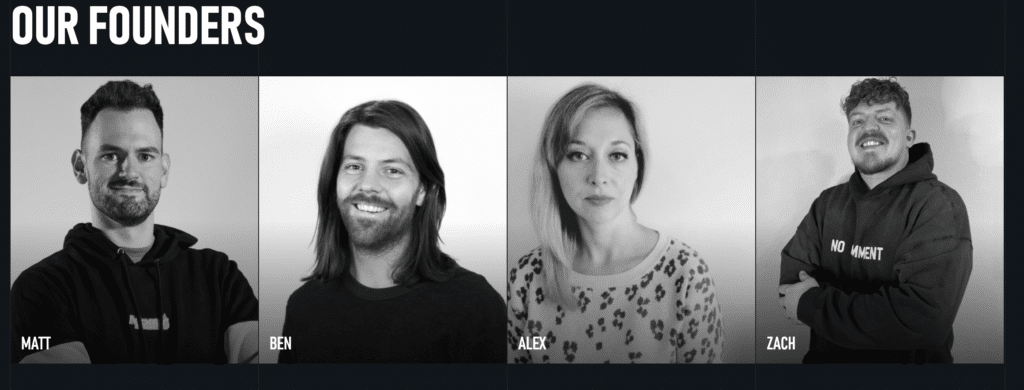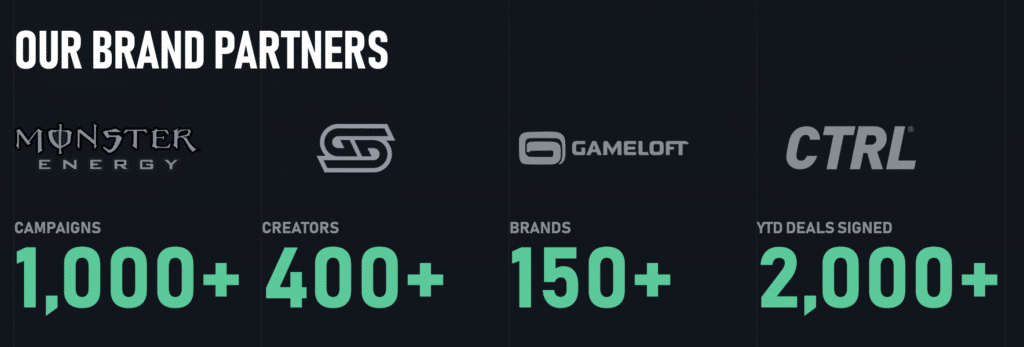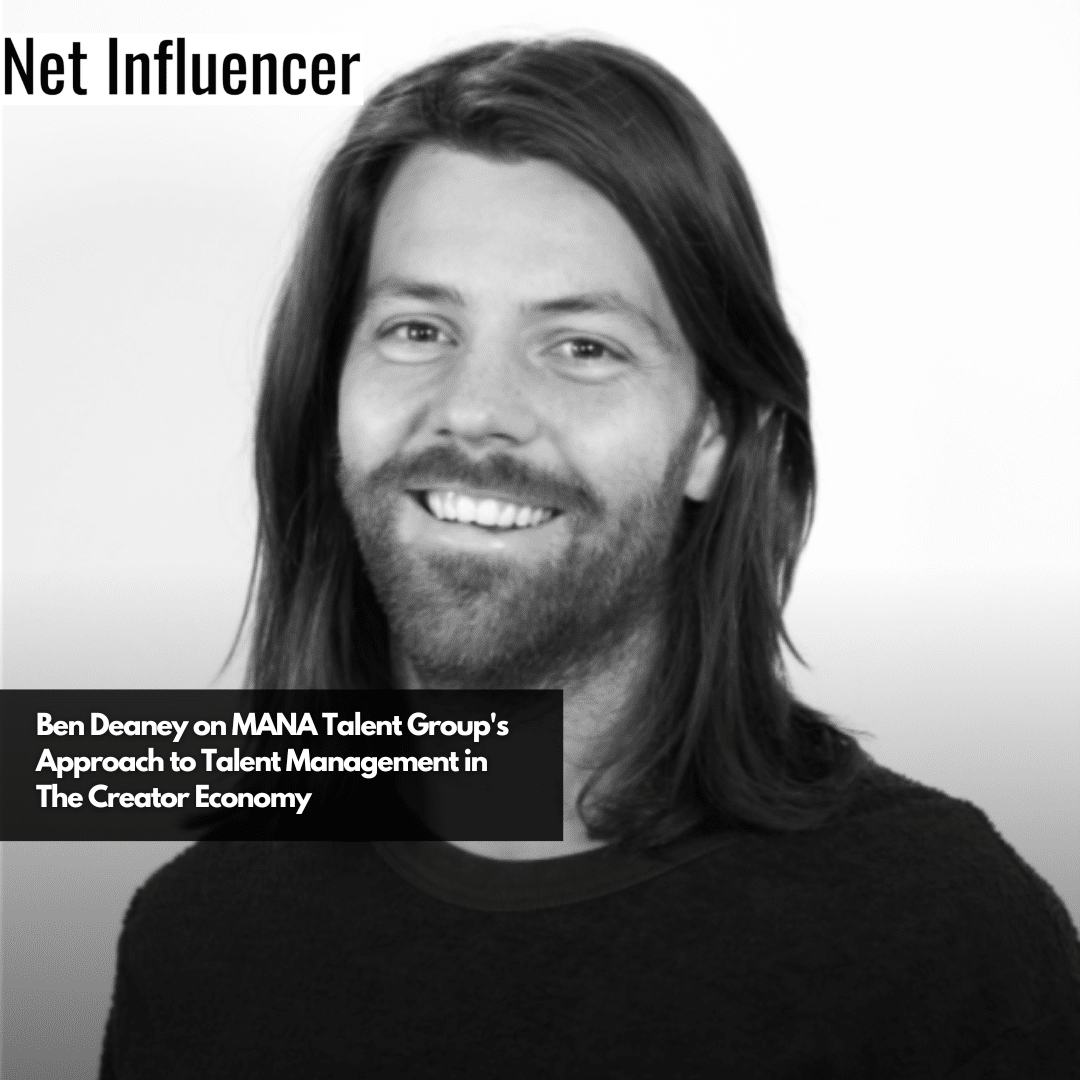Agency
Ben Deaney on MANA Talent Group’s Approach to Talent Management in the Creator Economy
MANA Talent Group is a creator economy talent management agency founded through the merger of three separate firms over time. According to Ben Deaney, MANA’s President and COO, the company brings together diverse expertise to provide holistic support for creators.
“MANA is really the combination of three separate agencies that have all merged together over time. So it’s a bit of a smorgasbord, but our ownership group kind of reflects that,” says Deaney.

Ben Deaney on MANA Talent Group’s Approach to Talent Management in the Creator Economy
The first component agency, Zees Media, emerged organically from Deaney assisting his wife, an ASMR creator, with business correspondence. Seeing an opportunity to apply his business school skills, Deaney began formally managing his wife’s channel.
“I realized that ASMR was a niche again was still growing and still very new and it was incredibly underserved. People didn’t know how to price themselves…Nobody had the full business structure yet in the ASMR space,” Deaney explains.
After successfully scaling up his wife’s channel, Deaney started working with other creators in her network who were seeking similar business guidance.
The second piece of MANA was Human Media Group, founded by Matt Phillips to manage gaming personality MoistCr1tikal. Matt played a similar organic role assisting MoistCr1tikal’s childhood friend manage his growing YouTube channel.

The final addition was Streamworks, co-founded by Zach Russell and Alexandra Press, built around former Vine and YouTube star JimmyHere. According to Deaney, “[Jimmy’s manager Zach] lived in Jimmy’s house, like Zach was there filming with Jimmy.” and a result knew what it takes to grow a youtube channel for an established talent
This personal creator-centric foundation is fundamental to MANA’s approach. “That’s really been our differentiator…to figure out a way to, to be human and reach creators where they’re at, as opposed to a lot of other people that are business first and people driven second,” Deaney says.
As President and COO, Deaney aims to maintain this creative-focused ethos amid business growth. “As a COO, I get to oversee how many people our staff are working with, who’s assigned to what creator, how can we build out our roster to make sure that we maintain that authenticity and those connections” he explains.
Maintaining Authenticity while Building Communities
Deaney asserts this creator-first perspective will define the influencer marketing sector moving forward. “Our goal is to help these communities also grow up and find their voice and make sure they’re understood and represented, even if there may be something that a brand doesn’t know at first. It’s real. The results are real. The performance is real. And that’s really our focus to continue to work with those groups and foster them as well.”
The fragmentation of social media landscapes presents both obstacles and opportunities for talent agencies managing creators like MANA, explains Deaney.

“One thing that is both a problem and an opportunity is that there’s ten different platforms you could list off, places where creators are making seven figures on their content,” he says.

Previously, YouTube reigned supreme. Now sizable earnings for influencers emerge from Instagram, TikTok, Twitch, and more. This diversification allows agencies to broaden campaigns across platforms, precisely tailoring brand integrations to each one’s strengths.
Simultaneously, “there are more brands that are taking risks in social media marketing,” Deaney notes. MANA leveraged their ASMR roster’s reach to creatively land tablet-maker Lenovo as an unconventional advertiser. “You also get some really cool traditional brands that are trying something new,” he says.
With influxes of new brands and agencies racing to capitalize on the creator economy’s momentum, trust and communication are paramount. Deaney observes that unlike past zero-sum competition, firms now actively collaborate to vet unfamiliar advertisers.
“There’s some great work that a few agencies actually are doing together to help vet new brands and things in the space. So agencies are starting to talk to each other now and not in a competition way, but like do you know this group? They’re reaching out and say they have budget. Has anyone worked with them?” says Deaney.
Authenticity remains central to MANA’s approach amidst the influencer marketing industry’s chaotic growth. “We don’t work for brands in the way some other agencies do where in order to secure the deal they require us to go out and find creators we’ve never had an established relationship with in order to fulfill a campaign or a brand’s targets.,” Deaney contrasts, emphasizing MANA’s firm creator allegiance.
“We are a content creator agency. We manage our talent. We are a talent group. That’s a very deliberate choice on our side to be working for talent and not for brands,” he states.
Deaney explains this bond protects creators’ independence while allowing MANA to push boundaries creatively bridging promotions suiting brands and creators’ distinct styles.
“Their channel is their lifeblood and we’re just a small piece of that ecosystem. We’re here to be symbiotic, not parasitic,” Deaney concludes, crystallizing MANA’s steadfast commitment to serving their talent first amidst the frenzy.
What’s next for MANA and the Creator Economy
Despite ongoing platform proliferation in the booming creator economy, MANA’s Deaney predicts the value of personalized talent management will endure.
“There are always going to be platforms and they’re always going to be really smart people with really great ideas about how they’re going to revolutionize everything,” he acknowledges. Still, Deaney maintains “the 1 to 1 talent interactions are going to be the continued kind of lifeblood of how to work with creators and how to understand them.”
Though MANA actively engages emerging tools, their priority remains manually “aggregat[ing] those opportunities and bring[ing] them to the creators.” Serving as an indispensable filter for individuals overwhelmed by fragmenting options.
Deaney expects two creator trends to shape MANA’s future strategy. First, proliferating “creator brands” where prominent YouTubers launch independent product ventures à la “MrBeast.” As these personalities funnel advertising into self-promotion, ad budgets will “trickle down” to smaller up-and-coming talents MANA champions.
Second, Deaney predicts escalating industry coordination. “I think there will be more creator backed agencies or groupings coming up,” he says. “Groups that will pop up organically, similar to how each of the three agencies that MANA is composed of did.” Rather than competition, established players actively nurture emerging collectives to strengthen the community.
This ethos guides MANA’s measured growth. “Our goal is never to be a 1000 person agency working with tons of different creators,” Deaney states. “It’s really deepening the relationships that we have with our roster.”
Priority number one is sustaining intimacy despite exponential opportunities. “Everyone lives at home and puts their videos on the internet and gets reactions from thousands, millions of people every time but they don’t have coworkers,” Deaney observes.
That’s why “figuring out ways to get people together” through events becomes integral. “Having people [share] some vent sessions in person, tied in with live in person event collabs, charity events” fosters meaningful social connections creators crave.
For Deaney, the creator economy’s financial spoils don’t define success. Rather, it’s the strength of human relationships created. MANA aims to keep building those bonds, not just harvesting dividends. The metrics that matter most can’t be quantified in a spreadsheet.





















